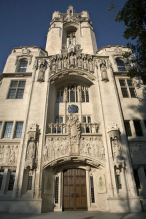Employee reinstatement
 The Supreme Court has recently issued a key employment law ruling on the remedy of reinstatement. James Goudie QC analyses the judgment.
The Supreme Court has recently issued a key employment law ruling on the remedy of reinstatement. James Goudie QC analyses the judgment.
In McBride v Scottish Police Authority [2016] UKSC 27 the Supreme Court has considered the remedy for unfair dismissal of reinstatement, which must of course be contrasted with the remedy of re-engagement. An ET has no power to order reinstatement in terms which alter the contractual terms of the complainant’s employment. The question was whether that is what the ET had purported to do in this case. The Supreme Court held that it had not.
The appeal arose from the scandal over the disputed identification of a fingerprint in a murder inquiry. A fingerprint at the murder scene was identified by four experts from the Scottish Criminal Records Office fingerprint bureau as belonging to DC McKie. As a result of the identification, DC McKie was charged with perjury for giving evidence that she had never been to the crime scene. During DC McKie’s trial differences of opinion emerged about the fingerprint identification and she was acquitted.
Ms McBride was one of the experts involved in the McKie Scandal. She and the other experts were suspended while investigations took place. One investigation concluded that the experts had not been guilty of any malicious wrongdoing and recommended that they return to work without any disciplinary action being taken. Accordingly, Ms McBride and the other experts resumed work on restricted duties and undertook extensive retraining. They sought to return to full duties (including the signing of joint reports and giving evidence in court) but were not allowed to do so.
In 2007 the Scottish Police Authority (“the SPA”) was established. David Mulhern was tasked with integrating the fingerprint service into a new Scottish Forensic Science Service. He made it clear he did not want the experts involved in the McKie Scandal to transfer to the SPA. Ms McBride was dismissed. She claimed for unfair dismissal.
The ET held that Ms McBride had been unfairly dismissed and ordered that she be reinstated “to the position of Fingerprint Officer and treated in all respects as if she had not been dismissed”. In its reasoning the ET held it would be practicable for the SPA “to reinstate the claimant to the role of (non-court going) fingerprint expert”.
The SPA appealed. The EAT revoked the ET’s judgment on remedy, holding that the ET’s decision that it was practicable for the SPA to comply with an order for reinstatement was perverse. On Ms McBride’s appeal to the Court of Session, although the Inner House rejected the EAT’s conclusion that the ET’s order for reinstatement was perverse, it held that the ET had erred in law by ordering the SPA to employ Ms McBride on altered contractual terms. Ms McBride appealed to the Supreme Court.
The Supreme Court unanimously allowed Ms McBride’s appeal. Lord Hodge (with whom the other Justices agreed) gave the leading judgment. Lord Hodge observed that the ET’s order for reinstatement viewed alone is not open to criticism, as it reflects the definition of such orders set out under Section 114(1) of the Employment Rights Act 1996. The question was whether the context in which the order was made and the ET’s reasoning in support of the order should give rise to a different interpretation of the order.
Lord Hodge answers this question in the negative. The ET was not seeking to impose a contractual limitation in the reinstatement order removing the excluded duties (i.e. signing reports and attending court to give evidence) from Ms McBride’s job description. Rather it was recognising a practical limitation on the scope of her work caused by circumstances beyond her and her employer’s control. This conclusion is supported by four reasons:
1. The ET was aware both of Ms McBride’s terms of employment and that for several years previously she had been actively employed as a fingerprint officer but had not been asked or allowed to sign reports or give evidence in court. That was the status quo to which she would have returned pursuant to a reinstatement order.
2. The ET was aware that Ms McBride wanted to perform the excluded duties but held that the SPA’s decision that she could not return to those duties was reasonable.
3. The ET rejected the idea that continuing in a non-court going role amounted to alternative employment. It accepted the evidence of Ms McBride’s managers about the amount of work carried out by fingerprint experts which does not involve the excluded duties and their assessment that Ms McBride had made a valuable contribution in the years in which her duties had been restricted.
4. The ET’s references to Ms McBride being reinstated to a “non-court going fingerprint officer role” were included in parenthesis and spoke of an understanding, which may suggest that the ET was considering the practical context of the reinstatement rather than an alteration of the terms of employment. The words in parenthesis confirmed that the order for reinstatement did not amount to an order that the employer must alter the status quo by allowing Ms McBride to resume the excluded duties.
James Goudie QC is a barrister at 11KBW. He can be contacted on 020 7632 8500 or This email address is being protected from spambots. You need JavaScript enabled to view it.. This article first appeared on the set’s Employment Law Blog.
